This post continues from The Doctrine of Balaam and the Nicolaitans. We are looking at the arguments of Thomas Witulski for dating the final book of the New Testament, the Book of Revelation, to the time of the emperor Hadrian. (Though the last book in the NT canon, I think there are good arguments for suspecting it may have been one of the earliest NT books written – but that’s another subject.)
What was the Throne of Satan (θρόνος τοῦ σατανᾶ) in the city of Pergamon?
In research, the question of what or which sanctuary might have been in the apocalyptist’s mind when using the term θρόνος τού σατανά is extremely controversial. (250f — all references are to W’s Die Johannesoffenbarung Und Kaiser Hadrian and all quotations are translations)
Through 25 pages with most of the text in small print and lengthy footnotes W. addresses the pros and cons of the many proposals:
- Temple of Augustus and the goddess Roma — the first imperial temple in the Roman province of Asia
- The Great Altar for sacrifices for the nearby temples of Athena and Zeus Soter (Saviour).
- Pergamon was the place of the chair of the judge of the proconsul of the province of Asia — Christians presumably would have been tried there
- A major sanctuary dedicated to the healing god Asclepius Soter (Saviour)
- The city of Pergamon — because it had been the place of intense persecution of Christians
- The city of Pergamon — since it was a major centre of emperor worship
- The city of Pergamon — since it was a major centre of pagan worship
- The hill on which Pergamon was built — its shape lending itself to the interpretation
However, here I will cut to the chase and announce “the winner”. It is one that another scholar, Yarbro Collins, had rejected despite all the points in its favour simply because it is “too late”. In W’s view, the throne of Satan was a reference to the giant statue of Zeus Philios, king of the gods, seated on his throne within a stunning temple complex overlooking the city. [This is not the same temple for Zeus Soter included in the above list. That temple was small and lower down on the hill.] The temple of Zeus Philios was consecrated in the year 129, the time of Hadrian. W accordingly sets 129 as the earliest Revelation would have been written.
Justifications for W’s identification of the Throne of Satan with the statue of the enthroned Zeus Philios:
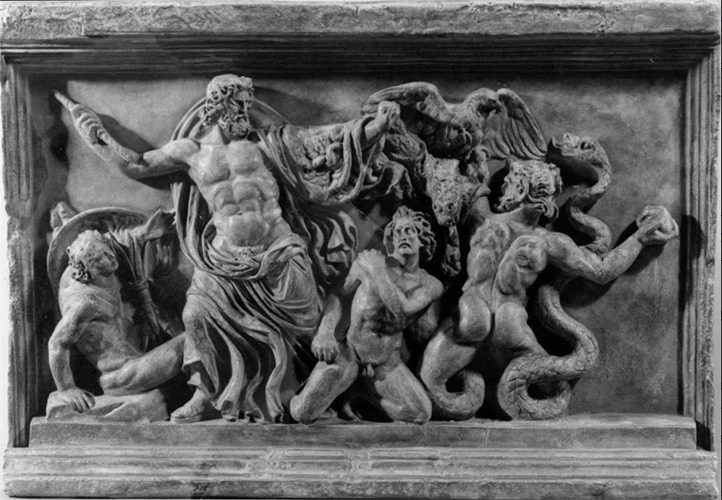
-
- The author of Revelation makes a clear distinction between Satan and both the Roman empire and the emperors at its head. Satan is the celestial enemy of God who was cast out of heaven, as we read in Revelation 12. Satan gave power to the beast but was distinct from the beast, the beast being Rome or its emperor, as per Revelation 13. The temple of Zeus Philios (Roman name: Jupiter Amicalis) was devoted to the worship of Zeus directly, alone, and was not part of the cult of emperor worship.
. - Zeus/Jupiter stood at the head of the Greco-Roman pantheon. His dominance was such that the poetry, the philosophical writings, the daily public attention he received in worship and the prevalent artwork, was so overwhelming that one might almost wonder if his figure signified a trend toward monotheism. Such a deity would readily be identified with Satan by followers of the Jewish Scriptures.
. - Justin, writing in the middle of the second century, informs us that Christians looked on pagan gods as fallen angels or demons (2 Apology 5). This view of the gods was based on the account of the fallen angels in the Jewish Book of Enoch. For Jews and Christians, then, the head of the pagan gods was Satan. (Similarly, in another Jewish writing, Joseph and Aseneth, the highest god of the Egyptians was identified with Satan.) Shortly after Justin, Clement of Alexandria recorded in Exhortation to the Heathen that Zeus could appear as a dragon. W. cites multiple sources of various kinds to demonstrate that the author of Revelation constructed his figure of Satan and the dragon from motifs well-known at the time to apply to Zeus.
. - The word “throne” in Revelation is always used in the literal sense of a chair or throne seat. This makes it unlikely that the author meant to use the term with reference to Pergamon in a figurative sense as a symbol of power or as a substitute for an altar. The smashed remains of a giant statue of Zeus seated on a throne have been discovered at Pergamon in the relevant time period. This statue was originally set in the Temple of Zeus Philios/Jupiter Amicalis at the top of the acropolis overlooking the city. It dominated all other temples in the area. Construction of this temple began with the emperor Trajan in 114 CE though it was not completed and consecrated until the time of Hadrian in 129 CE.
The long overall construction time was not least due to the fact that before the actual sanctuary was erected on the hilltop of the Pergamenian acropolis on its southwestern slope, supporting structures had to be built to a considerable extent, which had to carry the courtyard and the sacrificial altar of the temple. For the construction of such an extensive sanctuary, an in itself extraordinarily unsuitable location was chosen. This is certainly due to the fact that the sanctuary built here was to have a highly exposed position that would determine the entire cityscape. (276, my bolding in all quotations)
. - The temple was devoted to the worship of Zeus alone, independently of the emperor. It contained an enormous statue of Zeus seated on his throne. Coins depicted the emperor Trajan standing before the enthroned Zeus. The temple dominated the acropolis and the entire city.
- The author of Revelation makes a clear distinction between Satan and both the Roman empire and the emperors at its head. Satan is the celestial enemy of God who was cast out of heaven, as we read in Revelation 12. Satan gave power to the beast but was distinct from the beast, the beast being Rome or its emperor, as per Revelation 13. The temple of Zeus Philios (Roman name: Jupiter Amicalis) was devoted to the worship of Zeus directly, alone, and was not part of the cult of emperor worship.
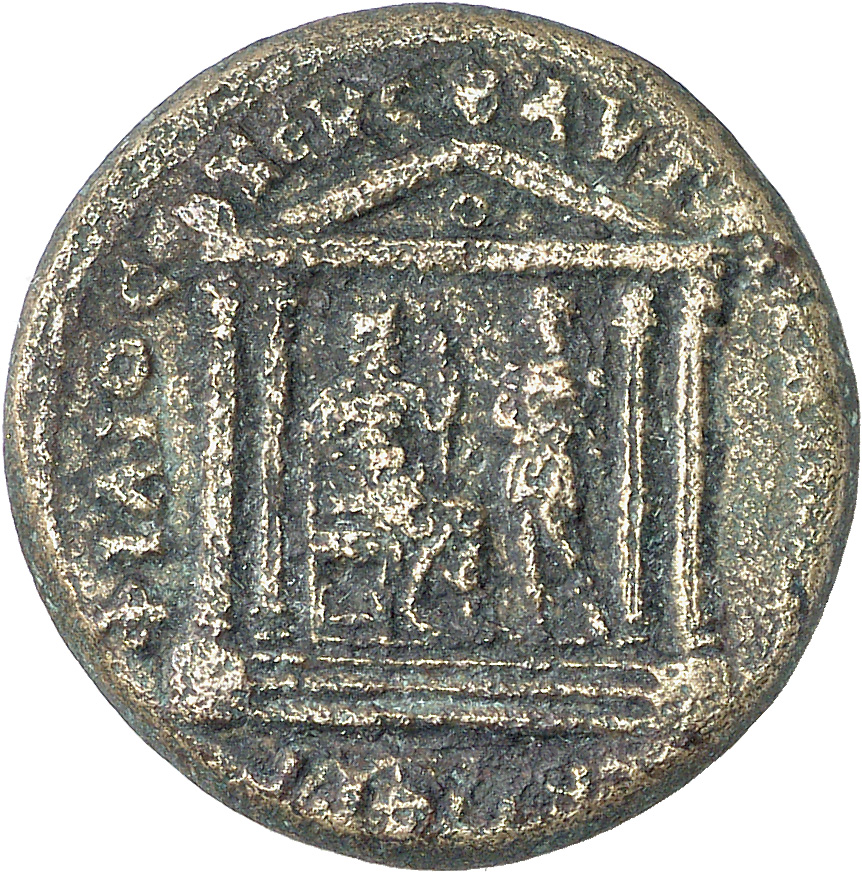
Due to the discovery of a seated statue of the deity Ζεύς Φίλιος/Iuppiter Amicalis, it can be considered certain that this sanctuary was explicitly dedicated to the deity Ζεύς, which is to be assumed as the real basis for the interpretation of the figure of the σατανάς [=Satan]. This deity was worshipped there independently and not in a roundabout way as a means of identification for the Roman emperor. Thus the utterance οπού ό σατανάς κατοικεί [= where Satan dwells] Rev 2:13 together with its implications can easily be connected with the sanctuary dedicated to Ζεύς Φίλιος/Iuppiter Amicalis and the princeps Trajan. Furthermore, it is of crucial importance that the statue of the Ζεύς Φίλιος/Iuppiter Amicalis is a seated statue of obviously considerable dimensions.247 The seat on which this statue was placed can in turn be easily understood as the θρόνος, on which the σατανάς is enthroned as an interpretation of the deity Ζεύς Φίλιος/Iuppiter Amicalis in the presence of the Emperor Trajan standing before him and also in the presence of the people visiting the temple.248 This takes into account the meaning of the θρόνος term used in Revelation. Finally, reference should be made to the enormous dimensions of the sanctuary of the Ζεύς Φίλιος/Iuppiter Amicalis and the princeps Trajan and his position dominating the Pergamenian acropolis, the entire city and its surrounding countryside. This explains extraordinarily well that the apocalyptist located the θρόνος τού σατανά precisely in Pergamon and transferred the residence of the σατανάς to this city of all places.251
247 Cf. on this Radt, Pergamon, 210: “More recently, parts of the colossal seated statue of Zeus Philios were unexpectedly found among previously unnoticed sculpture fragments from the Trajaneum [= Temple of Zeus built by Trajan]. Although these pieces are cruelly smashed, the identification is clear. They include a part of the bearded head and a fragment of the abdomen”.
248 Cf. the description of the sculpture group erected in the temple in Radt, Pergamon, 212: “The original cult owner Trajan had thus approved a cult sculpture group that showed himself, as an armoured commander, standing next to the enthroned [!] Zeus“. The depiction of this group of cult images can also be found on Pergamene coins (cf. Pergamon, 212), so that it can be well explained that the apocalyptist, who possibly did not live in Pergamon, also became aware of this group of cult images through the coins. However, it is just as conceivable that he saw it himself or that it was described to him by eyewitnesses.
251 Cf. on this here developed reference of the term θρόνος του σατανά also Klauck, Sendschreiben, 161 : “The temple of Trajan, visible from afar and enthroned on the mountain top, would make an excellent candidate [for the identification of the θρόνος του σατανά] in terms of the image”. For Klauck, this sanctuary, since he holds to the writing of Revelation in Domitian times, cannot be considered as a reference point for this term. Cf. also 161, A. 34. The reference of this term to the temple of the Ζεύς Φίλιος/Iuppiter Amicalis and of the princeps Trajan is also considered by Taeger, Streitschrift, 300: “[…] – whereby, by the way, the Trajaneum would lend itself particularly well to the ‘throne of Satan’“, and by Yarbro Collins, Pergamon, 172f; . . . .
(276ff. I have not included all footnotes.)

.
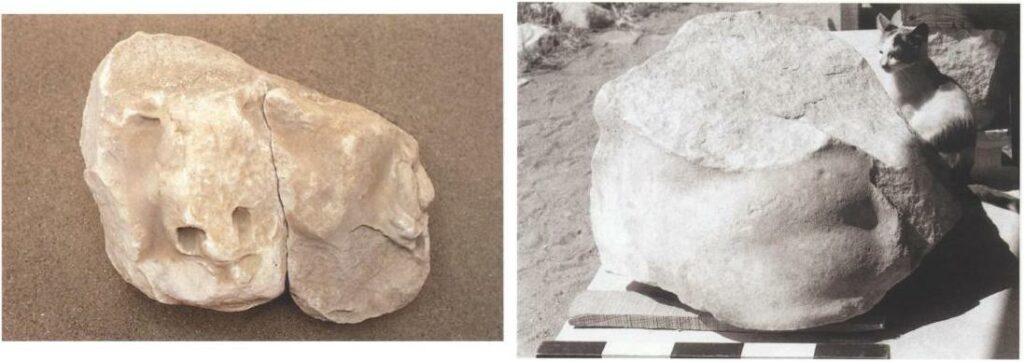
Right: fragment of the upper body of the statue of Zeus Philios
All images of statue and temple remains are from Raeck, Wulf. “Ein Gott Für Den Kaisertempel: Archäologisches Vom Trajaneum in Pergamon.” Antike Welt 30, no. 2 (1999): 105–11. http://www.jstor.org/stable/44439041
Three images of the remains of the Temple of Zeus constructed by Trajan:
.
Reconstructions from Radt, Wolfgang. “Faszinierendes Pergamon.” Archäologie in Deutschland, no. 2 (1992): 12–19. http://www.jstor.org/stable/26310105
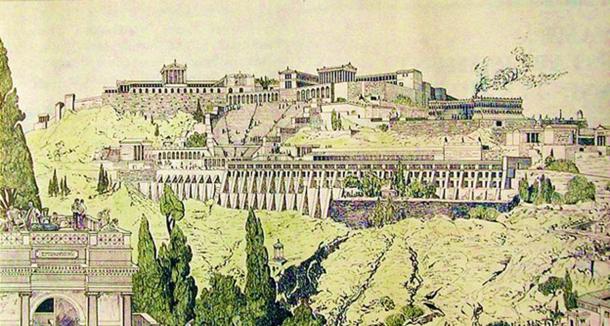
.
Two images – acropolis and temple of Zeus built by Trajan – from anasynthesis
Witulski, Thomas. Die Johannesoffenbarung Und Kaiser Hadrian: Studien Zur Datierung Der Neutestamentlichen Apokalypse. Göttingen: Vandenhoeck & Ruprecht, 2007. pp. 250-278
If you enjoyed this post, please consider donating to Vridar. Thanks!

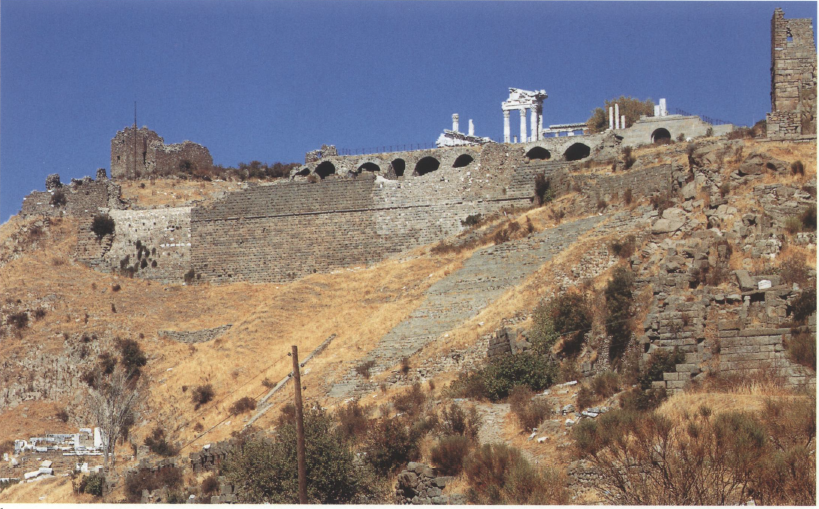
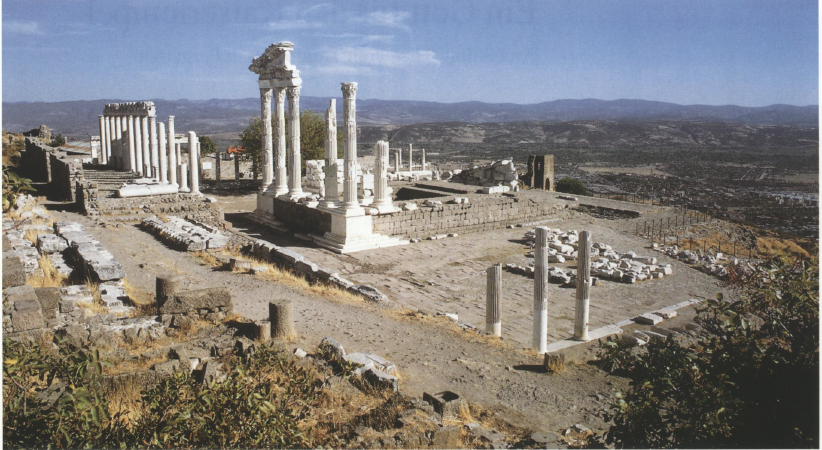
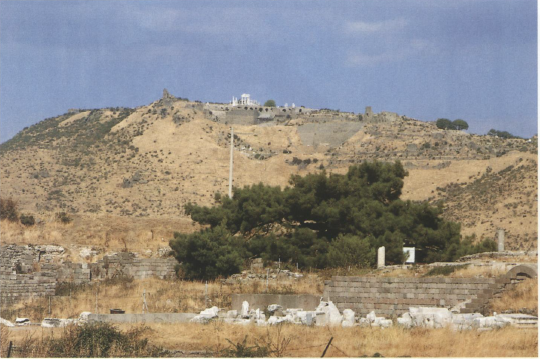
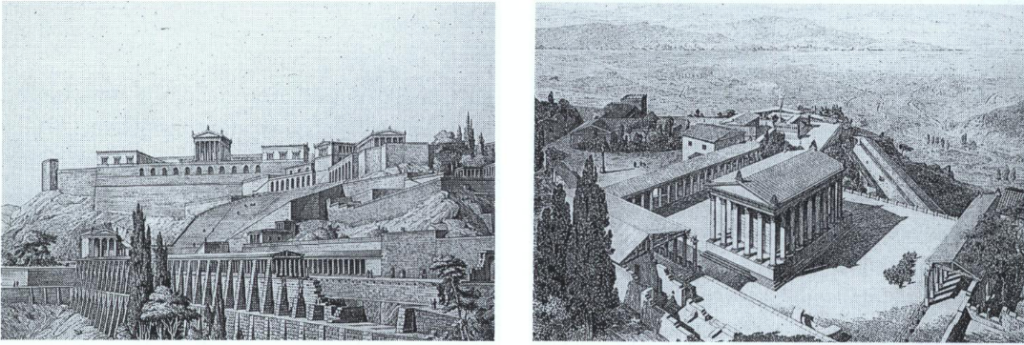
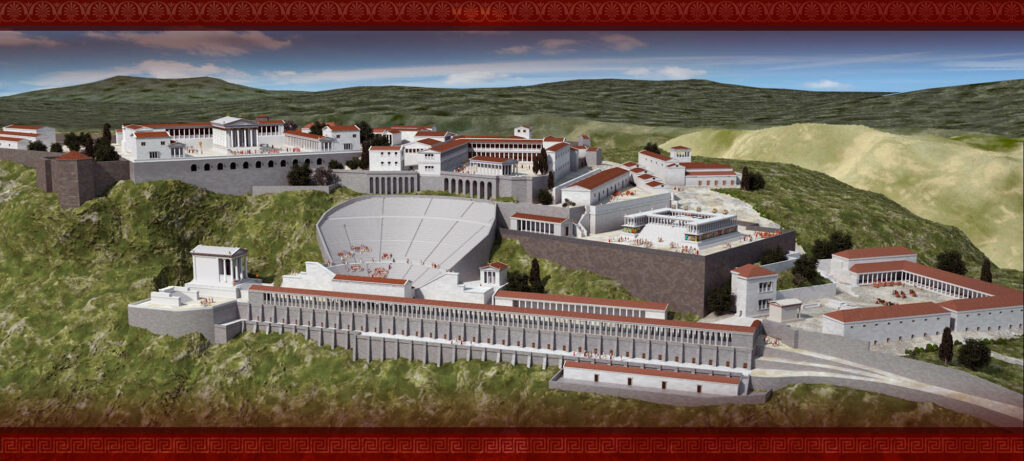
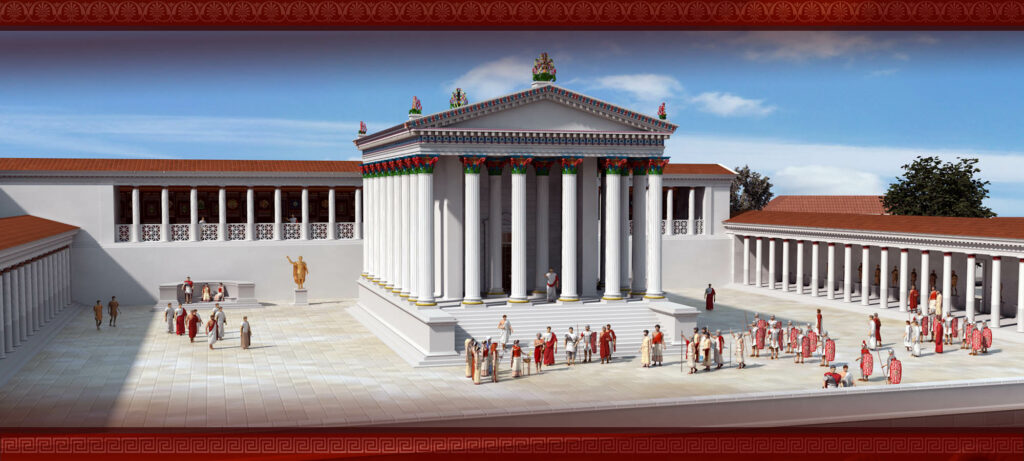
I think the Temple of Zeus you’re referring to is the one Wikipedia calls the Tajaneum, being the highest peak of the City. In which case I agree with the conclusion here but have ultimately small differences in how I’d come to it.
The emphasizing on saying the Throne of Satan in Pergamon is where just Zeus/Satan is worshiped and not also the Emperor is a mistake. The Throne isn’t mentioned only in the message to Pergamon it comes up again in chapter 13 where Satan/The Dragon gives his Throne to The beast (The Roman Emperor), and then in chapter 16 when the 6th Bowl is poured out it seems like all three villains are now sharing it.
Fortunately I don’t think The Temple of Zeus you’re talking about was completely unrelated to the Imperial Cult. My theory is the initial site of Imperial Worship set up under Augustus was at this exact same site, Trajan and Hadrian simply built a larger Temple Complex over it.
But I also suspect before their changed to Pergamon the Olympian Deity worshiped at the site was Apollo rather then Zeus. It’s frankly weird that Pergamon as we know it now doesn’t an Apollo temple given that it was a center of Asclepius worship and his cult tended to be derived from Apollo. Augustus’s definition was largely as Apollo, shown by things like making his Birthday the new Birthday of Apollo.
I no longer agree with those who argue Pergamon was the real location of Troy, but I have become convinced by their works that people in Pergamon likely believed that about themselves, largely because the Iliad does use the name of Pergamos for the Temple of Apollo at the highest peak of Illum, which was referred to as Apollo’s Seat and where the Mortal Wound of Aeneas was healed.
Hadrian was also worshiped as Apollo as Apollo in Asia, so I think all my these theories of mine back up the thesis of this post.